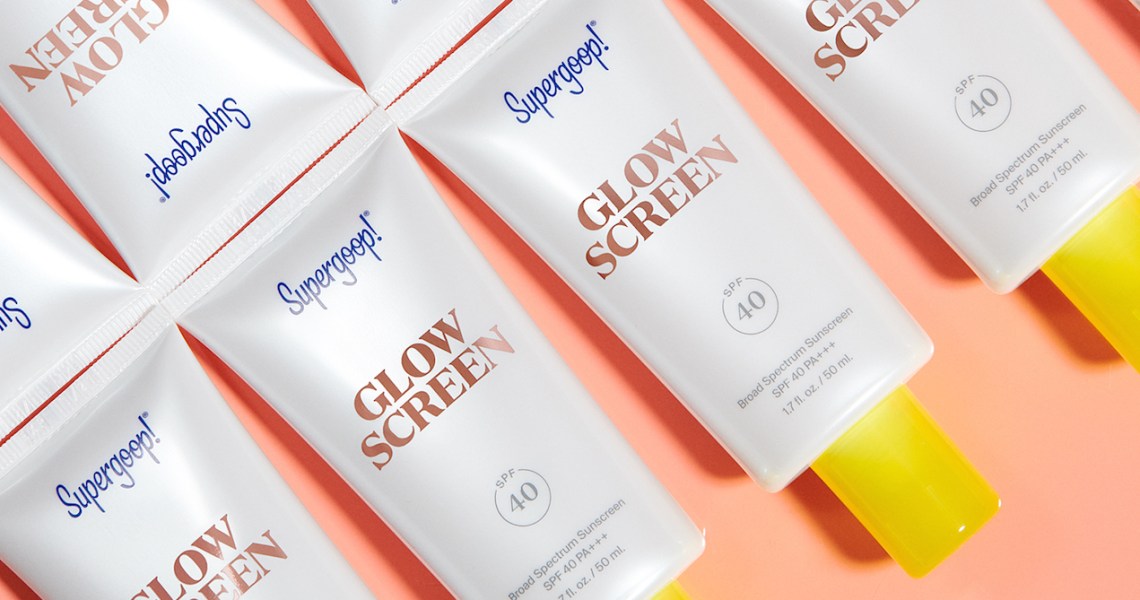Holly Thaggard, founder of Supergoop, dreams about sunscreen.
It’s the reason that product development meetings are in the morning, she said, to tackle a new day with fresh ideas. Typically, Supergoop has a product pipeline that covers a five-year span, which is common in the beauty industry. Although it can take years for a sunscreen product to make it to market, having many product ideas allows flexibility in moving up a production schedule to align with consumer trends. The most recent example is Supergoop’s Glowscreen SPF primer, which launched on Tuesday.
“What’s interesting about all of this is trying to make our product production timeline relevant for the consumer and where they are [with their beauty preferences],” said Thaggard. “We’ll take feedback from the consumer and look at our pipeline of what’s in the works and see what was ‘in.’ Glowing skin is a topic everyone is talking about.”
According to previous Glossy reporting, Supergoop doubled its year-over-year revenue in 2018 to $40 million; its e-commerce site grew 400% year over year in sales. The brand declined to state 2019 figures.
Supergoop began to notice the demand for primer products after the launch of its Unseen Sunscreen in January 2018. It sold out four times in its first year and sold out of its 15,000 units during Sephora’s VIB sale (a biannual event where loyalty members receive additional discounts) in November 2019. But when the brand launched its SPF-infused eyeshadow called Shimmershade in April 2019, Supergoop saw customers use it as a highlighter in user-generated photos, which led them to combine the idea of primers and highlighters to develop Glowscreen. One-third of Supergoop’s UGC features a person with dewy and glowy skin.
Supergoop used dedicated Slack channels as one way to collect consumer feedback by streamlining what customers are saying. It is a manual process where anyone on the team can share customer questions, comments and product suggestions from social media messages and customer service emails. The company receives over 500 messages a day through all channels; Thaggard receives about 50 a day personally, she said.
“We believe this is a hands-on thing and has to be done by people. There is no magic algorithm for this,” said Amanda Baldwin, Supergoop president.
Ad position: web_incontent_pos1
To offer a glowy look without appearing greasy, the brand had to take into account varying skin tones, skin types and customer activity (such as wearing products while sweating or sitting at a computer). Supergoop does not rely on traditional focus groups or consumer surveys through a third-party, said Thaggard. Instead, it tests lab samples with an undisclosed number of customers so that they can then provide feedback. Supergoop does this for every product; it launched six last year. By incorporating this data, Supergoop is able to then make tweaks to products. For Glowscreen, the company included ingredients like cocoa peptides that combat the effects of blue-violet light emitted by electronic screens, and added hyaluronic acid to give a dewier, more hydrated appearance.
“We make sure we understand how people are going to react to a product,” said Baldwin. “We can’t do this in a bubble because we have to make sure people are inspired to wear our SPF.”


